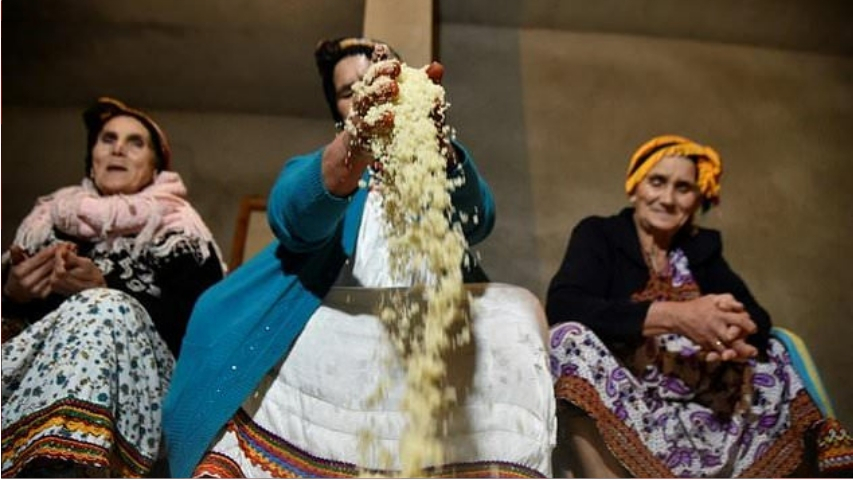
Morocco’s Women of Strength
by Shruthi Venkatesh February 5 2019, 5:59 pm Estimated Reading Time: 3 mins, 1 secLife is not easy for women living in the Atlas Mountains of central Morocco. Being a home to Amazigh population, their culture and language gained much influence. They are also referred to as the Berber women. Amazigh society women have been considered as one of the most important members in the North African countries, yet while taking a drive between the urban and the rural poor, they lack regional development.
There is no male dominance in the surroundings. Women take up the roles as decision makers, take care of their children and perform agriculture without any outside help. “Wives can’t accompany their husbands,” says Fatma Kadjik from Tiklit village, so married women have to learn to survive on their own. The husbands or the men tend to go far off places to do agricultural or city work in various parts of the country. Their only role is to send money home.

Algerian Berber women prepare traditional food (daily mail)
In 2005, Morocco took the oath by introducing the National Human Development Initiative Support Project – a million dollar budget aimed at improving people’s living conditions and reducing poverty. By 2014, the overall poverty rate had been cut by about half, but there's still a large gap between urban and rural poverty. Literacy is also low, especially among girls, who are often unable to continue their education beyond primary school. Compared to Europe, Morocco’s life expectancy is much higher but the poor access to health care affects such possibilities.
In such case, the young girls are being the protagonists of the story. These girls who just stepped into their teens are married off early, stepping into the social stigma of the Amazigh society. “Imagine a girl married at the age of 13 or 14 having three or four children. At 19, she already looks 50. She’s no longer beautiful and healthy,” points out Saida Oukhali, from Oum Rabia. Saida and her friend Aicha Jadda were both married at 16, but soon divorced. “We weren’t mature enough for the responsibility of marriage,” says Saida. “Divorce is a big problem. You’re exploited and no longer respected.” These young women express themselves through music and song, ignoring the village gossip.
Women with children have a heavier burden to bear. “We never rest. We keep running all day until night falls,” says Fatima Kadjik, who lives with her sister-in-law, Hafida. She describes a typical day: “Hafida and I wake up at 6am to make bread and get the girls ready for school. After, I take the cow to the field to graze. Then we wash the wheat, lay it to dry and prepare lunch. By then the kids are back from school. I give the cow water and take it to graze.” Her husband comments: “I'm worried about the younger generation ... Projects should be launched in this region, to create jobs for young people” hoping things will get better for the next generation.
The news was reported by Al Jazeera, a media network - on their official website last week. Morocco is now a country that is seeing massive economic development. Many of them have created NGOs in an effort to help their hometowns and make life a little better for future generations. These NGO’s walk – in to skill those young people in these communities and to break the cycle that women face. Hopefully it will give the people of the Atlas an opportunity to become more valued members of Moroccan society as a whole.








-173X130.jpg)
-173X130.jpg)
-173X130.jpg)
-173X130.jpg)